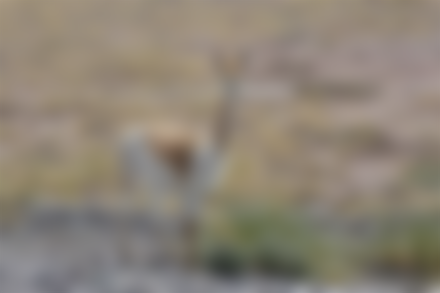The western border of South America. The long Andes Mountains stand as a natural shield along the entire border. Due to the Pacific coast and the geographical location of South America, the Andes have developed a land of natural diversity, which makes it unique and extraordinary. In addition, a wonderful combination of biodiversity and flora is found throughout the region. This is where the Inca civilization developed. There are also various cities and places of interest. In today's article we will learn about this amazing wonder of nature.
Introduction to the Andes Mountains
The Andes Mountains in South America are the longest continental mountains in the world. It is about 6,000 km long and 200 to 600 km wide in places. Its average elevation is about 4,000 km. There is much controversy over the origin of the name 'Andes'. According to most, it comes from the Quechua word 'Anti', which means 'East'. This continental mountain range extends to seven countries in South America. The countries are: Venezuela, Colombia, Ecuador, Peru, Bolivia, Chile and Argentina. [1]
The Andes Mountains are divided into three parts.
1) North Andes: This part falls in these three countries Venezuela, Colombia, Ecuador.
2) Middle Andes: This part is read in Peru and Bolivia.
3) South Andes: Argentina and Chile have this part

Outside of Asia, the Andes are the highest mountains in the world, except for the Himalayas. And here is Aconcagua, the highest mountain outside Asia. It has an elevation of about 6,981 meters above sea level. This peak is located in Mendoza, Argentina. The highest volcanoes in the world are also located here. Ozos del Salado, the highest volcano in the world, located on the border of Chile and Argentina; Its height is 6,893 meters. The Andes is home to Lake Titicaca, the highest lake in the world, on the border of Peru and Bolivia. Its water is clear and there are human settlements here. Different types of navigation are also done here. Of these, reed boats are the most widely used here.


There are also some high plateaus. The Altiplano Plateau in the Andes is the second highest plateau in the world after the Pamir Plateau in Tibet. Some of the major cities on these plateaus are Quito, Bogota, Cali, Arequipa, Medellin, Bucaramanga, Sucre, Merida, La Paz. The world's highest active volcano, Kotopexi, is located in the Andes Mountains. However, due to equatorial inflation, the farthest peak from the center of the earth is the peak of the Chimborazo volcano in Ecuador. There are also many active volcanoes. [3]

To the west of the Andes is the Atacama Desert, which is extremely dry, rainless but cool. It is located north of Chile and extends to the southern border of Peru. It is also considered to be the driest place on earth. It has an average temperature of 16 degrees Celsius and an average annual rainfall of only 15 millimeters.

The Amazon is the largest and second longest river in the world. It originates from the Nevada Mismi peak in the Andes Mountains of Peru. It also originates from the Orinako Andes, another major river in South America.
The Andes are not a single mountain. It consists of many mountain ranges. That is why it is called mountains. It is thought to have formed during the breakup of Pangea, the largest continent in the Triassic-Jurassic period. The collision of the tectonic plates of the earth gave rise to today's Andes. It is thought to have formed about 50 million years ago. The Andes was formed by the collision of the tectonic plates of South America and the Pacific Ocean, known as the Nazca Plate and the Antarctic Plate. However, this process is still ongoing. Another piece of information about the Andes is that it is also part of the American Cordillera mountain range. There are many mountain ranges in this part. And the Andes serve as the backbone of this chain, namely North America, Central America and South America. In addition, Caribbean islands in the Atlantic Ocean, such as Aruba, Bonaire, Curacao, and the submerged peaks of the Andes. [2] [3] [6] [7] [8] [9] [10]
Mineral resources
The Andes Mountains are rich in ore and salt. There are also reserves of commercially usable hydrocarbons. At the head of the Atacama Desert are copper reserves, which have made Chile and Peru the first and second largest exporters of copper, respectively.
There is also a huge treasure of gold. Peru has the fourth largest gold mine in the world. Yanakocha in Peru is one of the largest gold mines in the world.
About 45 percent of the world's copper and 30 percent of silver come from the Andes mines. Also lead and zinc are available. Bolivia has Salar de Uni, the largest saline plain in the world. So it looks like a huge mirror. [2] [3] [ 6] [9] [10]

Climate
As it spreads all over South America, different climates are observed in different parts of it. The Andes Mountains are divided into three parts based on the continental climate. Tropical and tropical Andes, dry Andes and wet Andes.
The climate in the South Andes is cold and rainy. The climate in the Andes is dry. The climate of the northern Andes is rainy and warm. In the south of the Andes, on the border of Chile and Argentina, there are tropical glaciers, which account for about 95% of the world's tropical glaciers. But sadly, due to global warming, the glaciers are melting faster.
The climate in the Andes changes within a few kilometers. For example: a few kilometers after the snow-capped peak Kotopexi there is a green covered rainforest. This diversity of climate has given the Andes a unique dimension. [2] [3] [8] [9] [10]
Plants
Natural forests and a variety of trees and flowering trees have sprung up in various parts of the Andes Mountains. The reason for this is that it extends from Venezuela in the Caribbean region in the north of South America to the cold, wet and windy region of the south to Cape Horn; Which includes the extremely arid region of the Atacama Desert.
There are over 30,000 species of vascular plants (ferns, conifers and various flowering plants) and half of them are native to the region. Also available here are tobacco and potatoes. At 4,500 meters above sea level, there are forests of polylipis and some forests, locally known as kuya, yagual, etc. The wood of these forests has been cut down since the time of the Inca civilization and this work is still going on. Currently, deforestation has been accelerated. As a result many plants are now identified as endangered. It is estimated that only 10 percent of the original forest remains.
Agriculture has been practiced in the Andes Mountains for almost 6,000 years. The Incas were also involved in agriculture. Crops were cultivated through irrigation by making steps like steps on the hill. The main crop was potato. Besides, maize was also cultivated. At present tomatoes, tobacco, cotton and coffee are cultivated as the main export products. Coca is also cultivated, from which cocaine is made. These coca leaves are chewed to alleviate physical problems and fatigue caused by hill height. This leaf is also popular in these areas as an herbal tea.

Coca; Image Source: bbc.com
Animals
Due to the biodiversity, there is a combination of different animals as well as plants. About two-thirds of the nearly 1,000 species of amphibians are endemic. The Andes are an important region for amphibians on Earth. In addition, there are about 600 species of mammals, 13 percent of which are endemic; There are more than 1800 species of birds, about 33 percent of which are endemic; There are more than 600 species of reptiles, 33 percent of which are endemic and about 400 species of fish, of which 33 percent are endemic.
There are some special animals of the camel family, such as: Vikuna, Guanaco; Which are found on the Altiplano Plateau. The locals also keep llamas and alpacas for meat and wool.

Chinchillas, an endangered species of rat, live in the Alpine region of the Andes. They are seen in the morning and evening. The Andean condor, the largest bird in the western hemisphere, lives in the Andes. However, their number is also decreasing.
In addition to these animals, hummus, cougar, andian fox, andian puma, andian armadillo (hairy or hairy armadillo) can be seen here. Sierra Finch and Duca Finch.
There are also some endemic animals of Lake Titicaca, such as Titicaca grab, which is unable to fly, Titicaca frogs, some species of hummingbirds, such as Hillstar, which can be seen at an altitude of about 4,000 meters.
Notable among the birds of the moist Andean forest are: Mountain Token, Quetzal, Andean Cock of the Rock. It is the national bird of Peru.Cock of the Rock; Image Source: ebird.org

Other mammals include mountain tapir, andian bear, and yellow-tailed woolly monkey. But they are now under threat. [2] [3] [4] [5] [8] [9] [10]
Human settlement and activities
All the diverse cultures have developed from north to south of the Andes Mountains. From the Inca civilization to the present time, various cultures have flourished and developed. Many roads built by the Incas in the Middle Andes can still be seen. Some of the oldest civilizations in the world developed in the Andes. Notable among these is the Inca civilization, which developed in the Cusco region south of the Andes. The Machu Picchu Pyramids, built by the Incas, still stand on a peak in the Andes, northwest of the city of Cusco.

Machu Picchu; Image Source: en.wikipedia.org
Also Peru's Chachapois and Nazca; Tiwanaku in Peru, Bolivia and Chile; These canaries of Ecuador also made important contributions. [5] [8]
The arrival of various European occupiers and merchants led to the spread of various diseases among the people of these areas, resulting in many deaths. In addition, many died due to the civil war.
Currently, Kichua and Aymara are among the languages of the Andeans. There are various roads, highways and railways for communication between different countries located in the Andes. Many cities have developed in the Andes. The largest city is Lima, the capital of Peru on the Pacific coast. There is also Bogota, Colombia, with a population of about 6 million; There is Santiago, Medellin, Ink. The capital of Bolivia, La Paz, is the tallest city in the world, at an altitude of about 3,650 meters above sea level. Also San Juan, Mendoza, Salta and Katamarka in Argentina; Calama and Rangakua in Chile; Bolivia's Auroro, Potosi and Sakaba; Huars, Cuzco and Puno in Peru; Ambato, Quito, Loja in Ecuador; Colombia Armenia, Bucaramanga, Palmyra; Merida and La Greta in Venezuela are some of these cities.
Tourists from home and abroad come here to enjoy the natural beauty of the Andes. Mountaineering, hiking, rafting, cycling, skiing, and stargazing are some of the leisure activities here. [2] [3] [9] [10]

The Andes of summer; Image Source: hdqwalls.com
These Andes mountains are an infinite creation in the heart of the earth. The beauty of the Andes has added a new dimension to nature. So its form and variety will undoubtedly impress anyone.
This article is in Bangla. It is about the Andes mountains, a unique natural gift.
References:
1. https://www.livescience.com/27897-andes-mountains.html
2. https://www.adventurealternative.com/about-the-andes/
3. https://www.chimuadventures.com/blog/2017/03/andes-mountains-facts/
4. https://www.chimuadventures.com/blog/2018/10/wildlife-guide-andes-mountains/
5. https://www.holbrooktravel.com/blog/where-we-travel/fascinating-facts-about-andes-mountains
6. https://www.adventurenation.com/blog/andes-mountains-interesting-facts-and-things-to-know/
7. http://www.bristol.ac.uk/news/2015/november/formation-of-the-andes.html
8. https://www.newworldencyclopedia.org/entry/Andes
9. https://factcity.com/facts-about-the-andes/
10. https://factslegend.org/andes-mountain-facts-35-adventurous-facts-for-your-homework/











Very nice article As a travel blogger myself, The Solo Girl Traveler, I admire several travel bloggers for their amazing creativity, talent, and sense of adventure. https://www.triund-trek.com